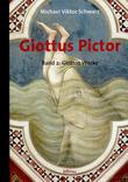Explore

Es handelt sich um Band 2 eines dreibändigen Unternehmens. Band 1 (M.V. Schwarz und P. Theis, Giottos Leben, Wien 2004) hat Giottos Biographie und das Corpus der nach den Schriftquellen sicheren Werke kritisch erarbeitet. Diese Werke präsentiert nun Band 2 in ihren jeweiligen Kontexten und versucht Aufschluß über Datierung und Abfolge zu gewinnen. Den Anfang macht die Arena-Kapelle, als das umfangreichste und am besten dokumentierte Werk. Diese Dokumentation konnte durch eine von Michaela Zoeschg durchgeführte Kampagne in Archiven und Bibliotheken von Padua und Venedig noch weiter verbessert werden. Einige Umstände aus der Frühgeschichte der Kapelle erscheinen nun in einem anderen Licht. Bei den Malereien wird stärker als bisher herausgearbeitet, daß sie die Betrachter in dezidiert verschiedener Weise ansprechen. Diese klassischen "Bilder" (im Sinn Hetzers) sind Sonderfälle, deren Konzept erst allmählich entwickelt wird. Diese These kann auch deshalb formuliert werden, weil die letzte Restaurierung der Kapelle neue Einsichten über die Arbeitsabfolge erbrachte. Der zweite Teil ist jenen Werken gewidmet, welche die Voraussetzungen für die Bildlichkeit der Arena-Kapelle schufen. Damit verbunden sind die Entscheidungen, den Isaak-Meister mit dem jungen Giotto gleichzusetzen und die Navicella (quellenkonform) früh zu datieren. Dies vorausgesetzt sind die frühen Werke einheitlich in ihrer Herkunft aus der stadtrömischen Malerei mit ihrer spätbyzantinischen und ihrer antikisierenden Komponente. Ihr gemeinsamer Zug ist das Bemühen um eine höchstmögliche Präsenz der Bildgegenstände, quasi an die Welt der Betrachter angelagert werden. Vor diesem Hintergrund wird die Bildlichkeit, die in der Arena-Kapelle erarbeitet wird, als eine Form von Rücknahme kenntlich: Statt weiterhin in der Welt der Betrachter gegenwärtig zu sein, erhalten die Bildgegenstände immer perfektere eigene Bildwelten. Der dritte Teil reagiert auf den urkundlich belegten Umstand, daß Giotto bald nach Abschluß seiner Paduaner Aufträge in Assisi tätig war. Dabei ist unklar welcher der giottesken Freskenkomplexe in S. Francesco dieser Phase zugeordnet werden kann. Dies gibt Gelegenheit, die Komplexe durchzugehen und zu zeigen, daß sie verschiedene Phasen von Giottos Schaffen reflektieren - so in den jüngeren Bildern der Franzlegende - überlagern sich sogar mehrere Schichten aus dem Giotto-Oeuvre und seiner Rezeption. Mit Giottos Assisi-Aufenthalt von 1308 wird die Magdalenen-Kapelle identifiziert. Der vierte Teil ist den Werken nach der Magdalenen-Kapelle bis zur Bardi-Kapelle gewidmet, die nach der frühen Nutzungsgeschichte von S. Croce auf ca. 1318-20 datiert wird. Es wird gezeigt, wie das Bildkonzept sich neuerlich verändert, indem Giotto die Bildräume zum Betrachter hin öffnet. Dieser Phase werden u.a. die Badia Fresken und die Tafeln für Ognissanti zugeordnet. Der fünfte Teil behandelt die Werke ab ca. 1320. Dieser Phase werden alle architektonisch gerahmten Polyptchen zugewiesen (auch der meist früh datierte Badia-Altar). Sie stehen im Wettbewerb mit den sienesischen Polyptychen in der Nachfolge der Maesta und antworten diesen mit einem stark von cisalpiner Gotik geprägten Entwurf. Überhaupt prägt der Wettbewerb mit den Sienesen diese Werkphase. In der Peruzzi-Kapelle wird nochmals an neuen Bildkonzepten gearbeitet. Extreme Offenheit gegen den Betrachter im einen Fresko (Tanz der Salome) steht gegen einen Fenstereffekt, der auf Albertis Konzept vorauszuweisen scheint, im anderen (Erweckung der Drusiana). Das Schlußkapitel versucht Giottos Werk in die Medienlandschaft der Jahrzehnte um 1300 einzuordnen und zu zeigen, wo er genommen und wo er gegeben hat. In einem Anhang wird dann die Campanile-Planung untersucht. Es kann erstens gezeigt werden, daß der Sienser Campanile-Riß den Polyptychon-Rahmen und gemalten Architekturen Giottos nahesteht und also wohl wirklich Giottos Plan reproduziert. Zweitens wird deutlich, wie viel der nach Giottos Tod weiterwachsende Turm mit seinem Skulpturenprogramm zu Giottos Nachleben beigetragen hat. Insofern schlagen das letzte Kapitel und der Anhang die Brücke zu Band 3 des Gesamtwerks, der "Giottos Nachleben" behandeln wird.
This book is included in DOAB.
Why read this book? Have your say.
You must be logged in to comment.
Rights Information
Are you the author or publisher of this work? If so, you can claim it as yours by registering as an Unglue.it rights holder.Downloads
- 97 - pdf (CC BY-NC-ND) at OAPEN Library.
- 146 - pdf (CC BY-NC-ND) at OAPEN Library.
- 194 - pdf (CC BY-NC-ND) at OAPEN Library.
Keywords
- Assisi
- Cappella degli Scrovegni
- Florenz
- Fresko
- Giotto
- Humanities
- Italian Art
- Italian Art, Giotto, Visual Culture
- Kapelle (Kirchenbau)
- Malerei
- Padua
- Rom
- thema EDItEUR::N History and Archaeology::NH History
- Visual Culture
Links
DOI: 10.26530/OAPEN_437157Editions

